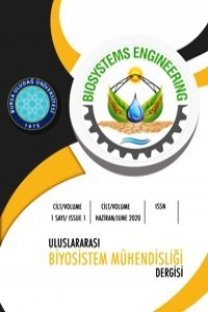Design of constructed wetland systems for cold climates
This study was conducted in order to treat domestic wastewater in Karaurgan village which is located in Sarikamis, a district of the city Kars and on which the most severe weather conditions of Turkey prevail. Karaurgan village which consists of two neighborhoods and one center is located 38 km from the district Sarikamis. During the time when work is carried out, the population of the village is approximately 750 and the number of households is around 750. It has been recorded that the domestic wastewater that originates from the village is discharged directly into the stream even without being retained in a septic tank. This stream that is also known as Karaurgan stream is one of tributaries of Aras river. The treatment system project that has been designed specifically for this village in order to ensure hygiene and prevent other environmental problems caused by domestic wastewater comprises 2 parts. Imhoff tank system that is known as the pre-treatment constitutes the first part while SFS-h or HF (submerged horizontal flow) which is known to be less problematic under cold climate conditions constitutes the other. It is planned that if the required treatment conditions are met within the scope of treatment system, the wastewater treated will be used as water source for irrigating forage plants. It is planned that minimum BOD5 removal rate be 92% according to the treatment system project designed.
Anahtar Kelimeler:
Cold climates, constructed wetlands, CW design approach, low cost treatment
___
- Biohabitats, 2021. Cold Climate Constructed Wetlands. https://biohabitats.com/wp-content/uploads/ColdClimateConstructedWetlands.pdf. Accessed 23 April 2021.
- Fan, J., Zhang, J., Ngo, H.H., Guo, W., Yin, X., 2016., Improving low-temperature performance of surface flow constructed wetlands using Potamogeton crispus L. Plant. Bioresource Technology, 218: 1257–1260.
- Jenssen, P.D., Maehlum, T., Krogstad, T., Vrale, L., 2005., High Performance Constructed Wetlands for Cold Climates. Journal of Environmental Science and Health, 40: 1343– 1353.
- Maehlum, T., Jenssen, P.D., Warner, W.S., 1995. Cold-climate co0nstructed wetlands.Wat. Sci. Tech. 22 (3): 95-101.
- MGM, 2021. Turkish State Meteorological Service, Climate classification (Kars-Sarikamis). https://mgm.gov.tr/iklim/iklim-siniflandirmalari.aspx?m=SARIKAMIS Accessed 24 April 2021.
- Mietto, A., Politeo, M., Breschigliaro, S., Borin, M., 2015. Temperature influence on nitrogen removal in a hybrid constructed wetland system in Northern Italy. Ecological Engineering, 75: 291–302.
- Peng, L, Hua, Y., Cai, J., Zhao, J., Zhao, W., Zhu, D., 2014. Effects of plants and temperature on nitrogen removal and microbiology in a pilot-scale integrated vertical-flow wetland treating primary domestic wastewater. Ecological Engineering, 64: 285–290.
- Wallace, S., Parkin, G., Cross, C., 2001. Cold climate wetlands: design and performance. Wat. Sci. Tech., 44 (11–12): 259–265.
- Wang, M., Zhang, D.Q., Dong, J.W., Tan, S.K., 2017., Constructed wetlands for wastewater treatment in cold climate — A review. Journal of Environmental Sciences, 57: 293– 311.
- Wittgren, H.B., Tobiason, S., 1995., Nitrogen removal from pretreated wastewater in surface flow wetlands. Wat. Sci. Tech., 32 (3): 69-78.
- Yin, H., Shen, W., 1995., Using reed beds for winter operation of wetland treatment system for wastewater. Wat. Sci. Tech., 32 (2): 111-117.
- Zhang, L., Mu, L., Xiong, Y., Xi, B., Li, G., Li, C., 2015., The development of a natural heating technology for constructed wetlands in cold climates. Ecological Engineering, 75: 51–60.
- ISSN: 2757-8100
- Başlangıç: 2020
- Yayıncı: Bursa Uludağ Üniversitesi
